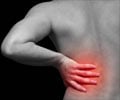Types
The choice of techniques of traction and the position of spinal traction are dependent on the part where the tractive force needs to be imparted and the patient's physical condition, individual tolerance, and the spinal level to be treated.
- Mechanical forms of traction: This form of traction is applied by motorized pulley system with weights. It is applied on the lumbar region of the spine with a sling device attached to the patient’s body and the stretch is applied very gradually for approximately a minute. Post that traction is decreased gradually for half a time and maintained at that level for approximately one minute. This process is repeated for ten to fifteen times.
- Manual traction: Therapist uses his or her hands on the patient’s body, with the body weight of the therapist providing the tractive force. Patient is positioned and the therapist pulls at the ankles using controlled force. A pelvic belt with straps may be used for distraction.
- Gravitational Traction: Gravitational traction is usually avoided as it has reportedly resulted in many side-effects like blood pressure, headaches, blurred vision, and contact lens discomfort.
Spinal traction can be classified into five categories:
- Continuous Traction: Continuous spinal traction is applied for several hours requiring only small amounts of weight. It’s an uncomfortable mode of traction wherein patient cannot tolerate poundages enough to cause separation of the vertebrae for an extended length of time.
- Sustained/ Static Traction: Steady amount of traction is applied for few minutes and equally coupled with stronger poundage.
- Intermittent Mechanical Traction: Traction is applied alternatively and withdrawn through a mechanical device.
- Positional Traction: Traction is applied by the use of pillows, blocks, or sandbags to affect a longitudinal pull on the spinal structures.






